How to plant a spherical willow and take care of it in the garden?
For garden owners, planting a spherical willow will be the solution to many problems. With its help, you can strengthen the banks of streams and ponds, make a beautiful framing of paths, grow a hedge and even a gazebo. For lovers of bonsai techniques, the tree will serve as an object for using their creative possibilities - its crown is easily decorative pruning. When grown as a bush, willow looks great in group plantings.
Features: sophistication and unpretentiousness
The difference between spherical willow and many other plants is the possibility of planting in places where groundwater accumulates. The resistance of its roots to the occurrence of rot in an environment of high humidity is used by the owners of lowland garden plots for landscaping the territory. The tree grows well deciduous even in partial shade, but prefers to grow in places that are well lit by the sun. The tight attachment of the leaves to the petioles allows cultivation in open windy areas.
Advice! Further care of the tree will be greatly facilitated if it is planted on a site flooded with groundwater. The entire summer period can be done without watering.
The spherical willow differs from other species of willows in the arrangement of gray branches - they do not droop during regrowth, but rush up. The bulk of the emerald pointed leaves are located on the upper shoots of the crown, resembling a volumetric ball. In shrub cultivation, gardeners leave several main thick shoots, and if they want to get a miniature tree, remove all branches except one central one. The future crown will be formed on it.
Growing up: one hundred percent survival rate
The spherical willow is propagated by seeds only by those gardeners who have nowhere to take cuttings. In the spring, the plant is covered with many fluffy light clouds, this is how its inflorescences look. Ripe seeds are difficult to collect; at the slightest breath of wind, they are spread throughout the area. In addition, after a few days the seeds are not suitable for germination.
Advice! It must be borne in mind that an adult tree can grow up to 6-7 m in height. If during planting it was planned to grow a compact specimen, then care is necessary with regular pruning of shoots in spring to a length of up to 0.5 m.
So that the cuttings do not grow roots, you need to try very hard - the willow easily takes root in water or wet sand. Before the start of sap flow, annual shoots are cut off and cuttings 30-40 cm long are cut. Each of them should have from 3 to 6 healthy buds. Next steps:
- The oblique cuts of the shoots are dried and sprinkled with crushed coal.
- Containers with calcined river sand are prepared.
- Cuttings are planted at a distance of 10-20 cm from each other.
- Moisten sand abundantly.
At room temperature, willow seedlings will begin to grow in a month. Caring for them consists only in periodic watering. The best time to plant is in early spring, as soon as the topsoil has thawed. But even with the summer arrangement of seedlings on the site, the tree will take root perfectly.
Landing: moving to the lawn
The spherical willow takes root especially well in slightly acidic loamy soils. If the soil is too dense, add a couple of buckets of sand to it and mix thoroughly. When growing a compact decorative tree, you can insure yourself and lay a layer of expanded clay (10-20 cm) on the bottom of the hole. A hole is dug out corresponding to the size of the seedling - usually about half a meter deep and the same width is enough.
Advice! Trees from peat pots do not take out, but plant directly in them. When grown in cups, planting is carried out by the transshipment method (together with an earthen clod).
Two-thirds of the excavated soil is mixed with a bucket of rotted manure and a small amount of any mineral fertilizer, then the mixture is placed back into the hole. The seedling perfectly tolerates the deepening of several buds, thereby increasing additional roots. Sprinkle the landing site with soil and compact it well. It remains to pour a few buckets of water under the willow root.
Care: it couldn't be easier
Water the willow as needed. Usually, adding 10 liters of water weekly in the morning or evening is sufficient. An adult willow is very fond of regular spraying, but only such a procedure cannot be carried out in direct sunlight. The plant responds well to regular pruning. Novice gardeners usually do not dare to take such drastic actions when leaving, but in vain. In gratitude, the tree will grow more powerful branches, and the crown will turn out to be dense, compact.
Advice! When carrying out an autumn planting, it is necessary to cut off all the leaves. Then the tree will not waste its energy on sap flow and winters well.
Usually, fertilization during planting is sufficient for plant development. Only when grown in scarce soils, additional fertilizing is needed. Two times during the summer, 200 g of dissolved complex fertilizers are applied under the root. Pests attacked the spherical willow if the following symptoms are found during a routine examination:
- shiny cobwebs between branches;
- accumulation of insects near the tender parts of the shoots;
- various damage to the bark;
- brown spots on the leaves;
- many drooping twigs.
In summer, especially during dry periods, various harmful insects can settle on the tree. Once a week, you need to spray the willow with a solution of any modern insecticide. To minimize the likelihood of their attack, it is necessary to remove fallen leaves in a timely manner. Also, a mandatory procedure in the care is loosening the soil to a depth of about 20 cm.
After the willow grows up to 1.5 m, you can start art. The branches of willows planted on different sides of the garden path are intertwined at a sufficient height. Now they will grow as a whole, and after a year you can walk under the shade of their shady crowns. For a hedge, young plants are immediately planted at a distance of 40-60 cm and the shoots are intertwined as they grow.
Caring for spherical willow is simple, and its cultivation is possible in various ways. The spherical willow feels great among the bushes of low-growing roses. Conifers of compact trees also have a beneficial effect on the plant, protecting the bare trunk and scaring off rodents with a peculiar aroma. If you plant several willow bushes on the banks of a homemade pond, you can avoid collapse of layers of earth into the water.

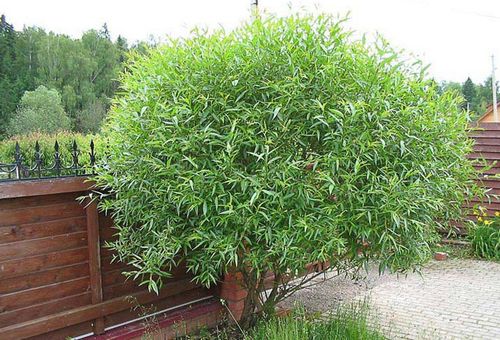
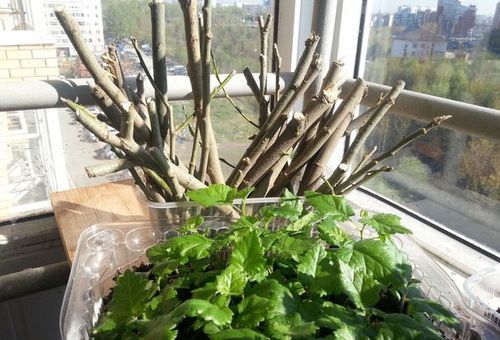
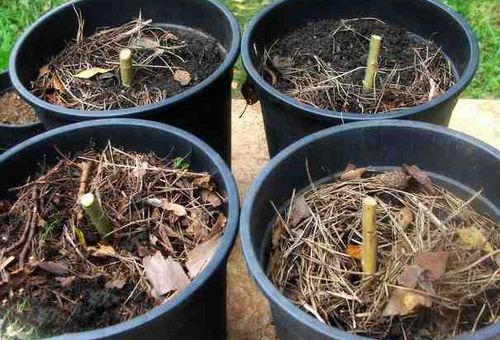
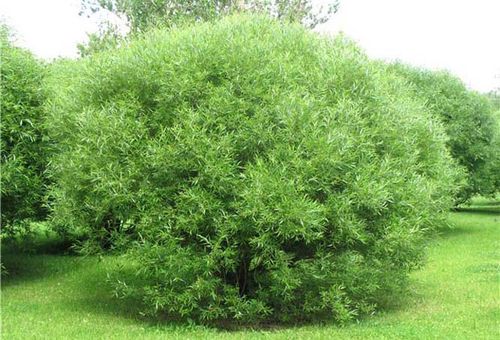
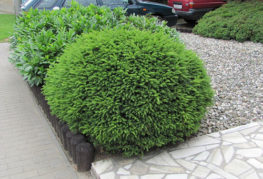

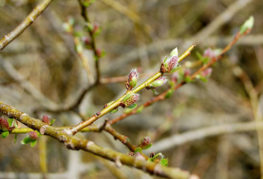
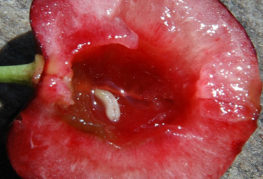


and will be published shortly.